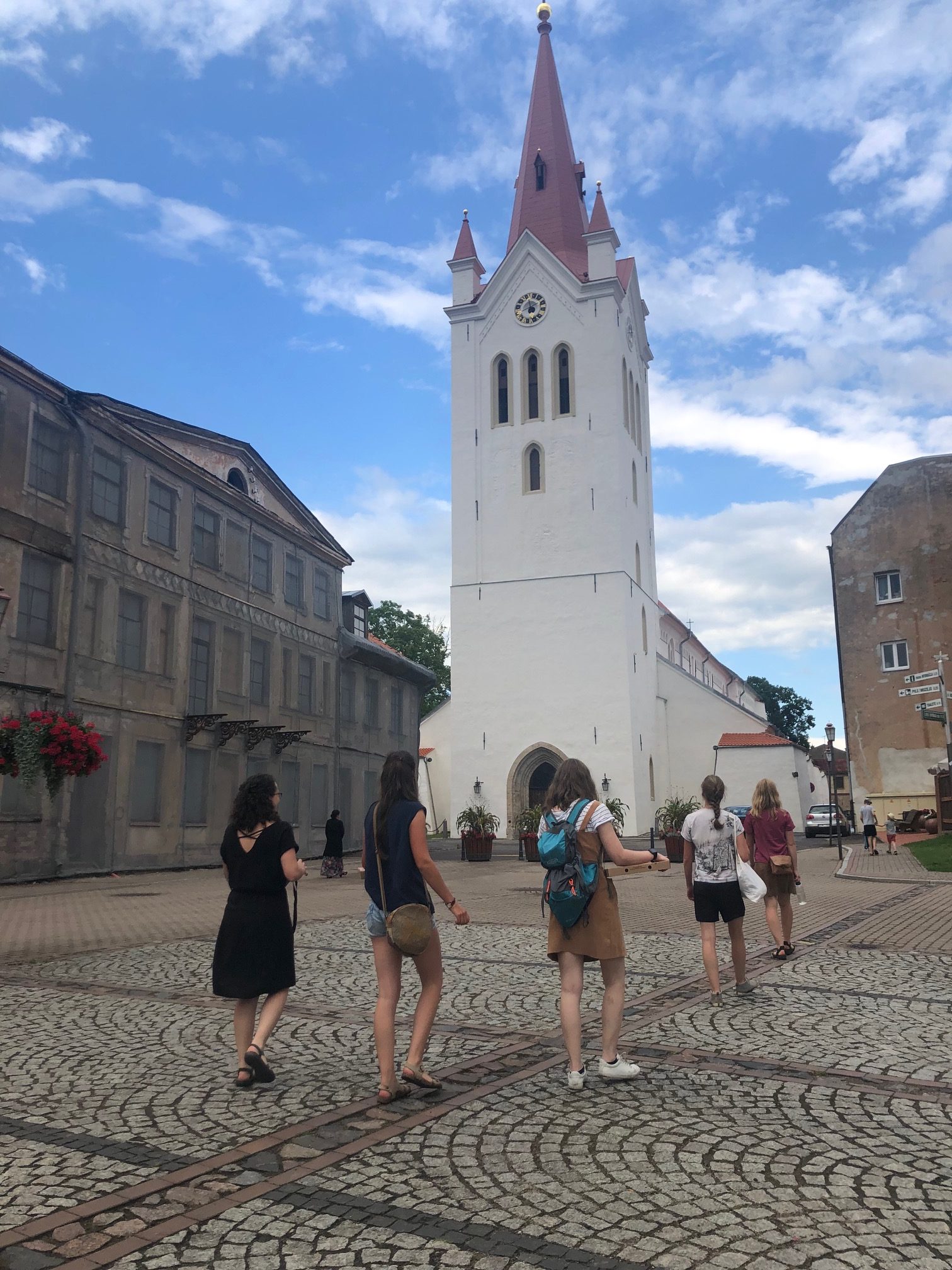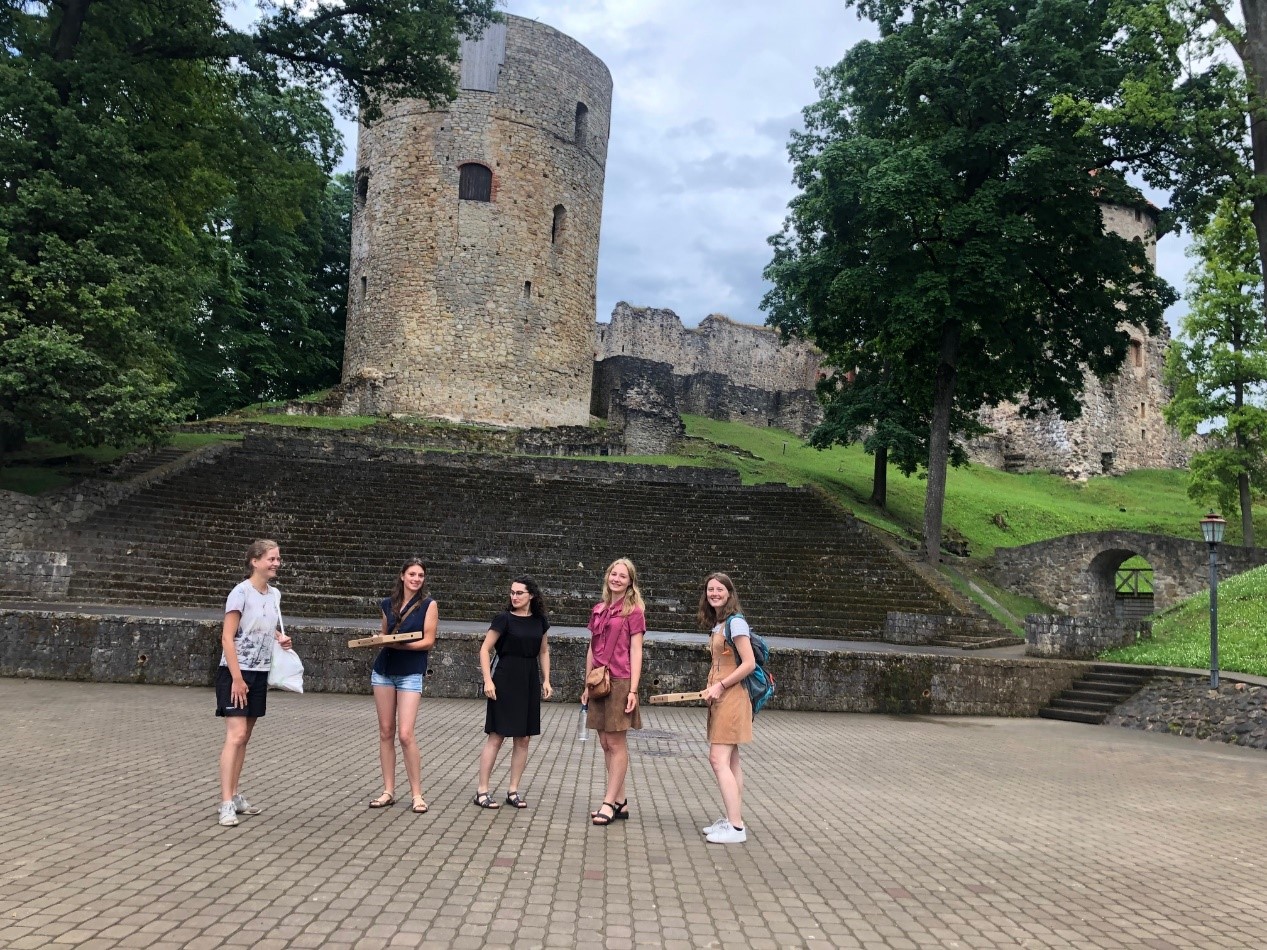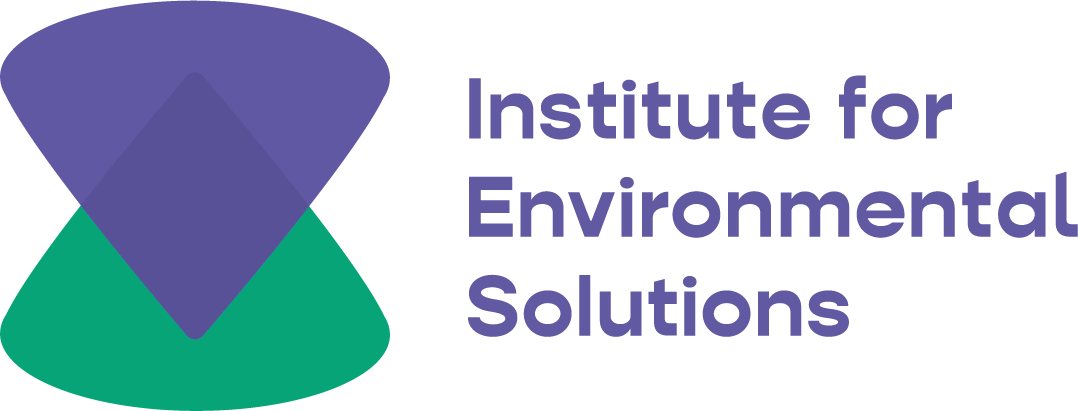Internship in Latvian Fund of Nature 2021: Ella Christie
"With travel being so uncertain over the last year, I jumped at the chance to travel to Latvia for this internship. I had never been to the Baltic's before and LFN provided the perfect opportunity: to get to visit a new country and work in conservation, two of my favourite things. I am a masters student on the Erasmus Mundus program in Digital Earth and have a bachelors in wildlife conservation and zoo biology.
I believe that there is still a big gap in conservationists using geospatial research for their work. Spatial analysis and mapping can provide important information to help in decision making. It can be used to assess habitat quality, environmental conditions, locate suitable areas for conservation purposes to name a few. That led me to conduct some work of my own during this internship. Using only a layer showing the locations of urban meadows in Riga municipality, I was able to create a series of maps which showed the land cover of the meadows and surrounding areas, as well as performing some locational analysis which outlined some potential locations for urban meadows in the future. With further data these maps could be used to show a time series of habitat connectivity and land cover change in Riga municipality over time.
Although I have experience working in conservation, vegetation monitoring and plant identification were not areas where I had a lot of background knowledge. Plant identification was something I was interested in learning more about which I had the perfect opportunity to do during this internship.
I was one of five interns here for the summer and the last to arrive. The social aspect of this internship was great, we lived in two apartments just around the corner from each other so were able to meet up on weekends to explore Riga together. Monthly intern trips were organised which allowed us to explore other areas of Latvia and spend even more time together as a group.
Latvia’s meadow and grassland habitats have a hugely understated beauty. At first glance one might just see an open field. However, the more you focus the more you begin to understand just how magical these habitats are. Blossoming flowers from a wealth of different plants, bees, butterflies and damselflies darting around in great numbers, these habitats bring a real sense of calm. This was a very practical position, with almost all of my time spent outdoors in nature, exploring meadows and the wildlife within them. Expect a lot of surveying, seed collection...and horseflies. The two main tasks assigned to me were to assist win the monitoring and assessment of urban meadows in Riga municipality to help formulate management plans for each location and to help monitor and collect seeds for the square meter project. We conducted transects at every site we visited to better understand the current state of the habitat and monitor grassland plant species. Another big part of my job was collecting seeds from a variety of meadow species to make seed packets which will be distributed to the public for sowing. This greatly improved my identification skills, particularly being able to recognise several species at their different life stages to be able to collect seeds when they were ready to disperse.

What stood out to me about this internship was the care put into the welfare, learning, and overall experience for each of us interns. I can honestly say that the Latvian fund for Nature went above and beyond to make sure we got the most out of our experience both professionally and personally. From finding out our specific interests, to organising accommodation and trips for us. While my time in Riga was short, my experience and the people I have met here have been memorable. I look forward to keeping up with the incredible work done here in the future.

I am now moving to the Czech Republic to complete the second year of my masters degree. I will be continuing to work in conservation when I finish. I hope to work towards bridging the gap between geoinformatics and conservation, using spatial analysis methods to help with strategizing and decision making in conservation." - Ella Christie, Austria






